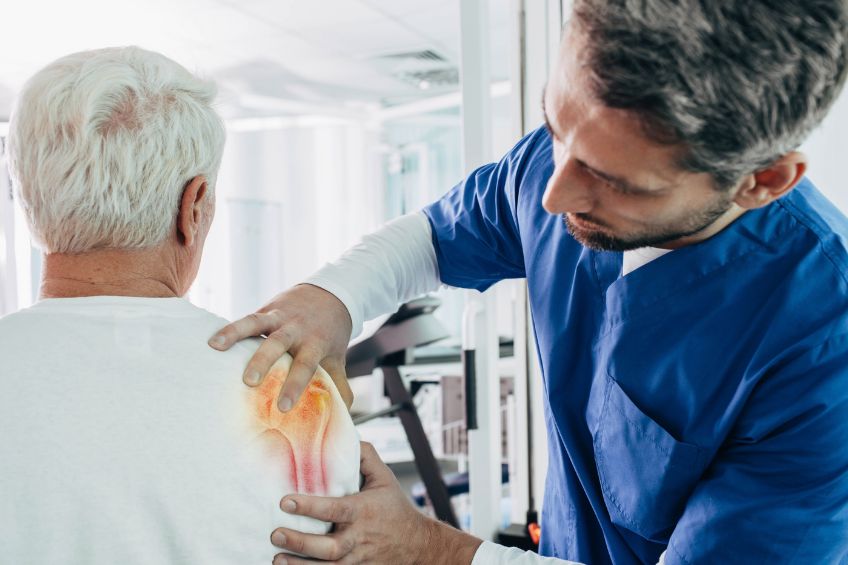Joint pain is known as a common nuisance, especially for people leading active lifestyles. Sprains, strains, and minor injuries can be the most typical causes of joint pain. However, individuals that experience joint pain regularly may suffer from more serious medical conditions, namely arthritis (1). Arthritis is a state of joint inflammation that can cause extended periods of pain and contribute to health conditions elsewhere in the body. Furthermore, chronic inflammation worsens with age (2). For these reasons, you should be on the lookout for early signs of arthritis to determine whether you need immediate medical intervention or if your injury is less significant and does not warrant a worry.
In this article, we outline the early signs of arthritis you should never ignore to combat the development of chronic inflammation or reduce symptoms of the condition if you already suffer from it.
1. Extended Periods of Pain in the Joints
Most joint pain occurs from minor injuries and will disappear within days. However, an early sign of arthritis is long periods of pain in the joints that occur frequently, after no apparent injury has occurred, and can remain for weeks. Chronic inflammation is a primary contributor to rheumatoid arthritis that displays these painful symptoms, and you should ensure that you take note of how long pain in your joints lasts to catch the conditions early.
2. Swelling of the Joints
In most cases, joint swelling from minor injuries is small and does not stick around for extended periods of time. But, consistent enlarging of the areas around the joints is a typical early sign of arthritis you should never ignore. You will be able to tell if your joints are swollen as they will appear disfigured in comparison with the same joints on the other side of your body or will be extremely sore to the touch. You may not be able to move your swollen joints very easily and you may feel extremely stiff in the affected areas, more common signs of swollen joints that can suggest arthritis (3).
3. Joint Pain in Both Sides of the Body
Some types of arthritis affect specific joints on one side of the body, while rheumatoid arthritis can often cause pain and problems in the joints on both sides of the body (4). For example, both of your wrists might feel painful and swollen in the joints, indicating an early sign of this particular type of arthritis you should never ignore.
4. The Onset of a Fever
Research on arthritis suggests that the development of this condition can onset fevers in individuals that have certain underlying health conditions or weakened immune systems (5). This can be an incredibly uncomfortable early sign of arthritis that many ignore or regard as merely a minor infection unrelated to joint inflammation. Therefore, you should chat with your health practitioner to determine the link between your fever and arthritis or whether you can safely rule out the condition altogether.
5. Warmth in the Joints
Fevers raise the body’s internal temperature, and this can lead to warmer joints as an early sign of arthritis. Furthermore, warmth in the joints is associated with injury, infection, and inflammation as the body attempts to repair the injury, fight bacteria, or reduce the prominence of inflammation. The joints can then also appear red as internal inflammatory processes work to rectify the damage and reduce the symptoms of arthritis or chronic inflammation.
6. Nodules Forming on the Skin
A more severe and strange early sign of arthritis is the formation of lumps on the skin near the joints, known as nodules. While more research into the reason that these develop is needed to conclude the link between their formation and arthritis, the fact that many people with rheumatoid arthritis develop these firm and painless nodules suggests a consistency with this as an early sign of arthritis you should never ignore.
7. Prolonged Feelings of Fatigue
Fatigue is a more common symptom of arthritis than many tend to believe. While you will feel fatigued after exercise that can injure the joints and cause short-term pain, deep-rooted fatigue is typically linked to extended periods of inflammation and arthritis. This is because the body is continually working to dispel infection or injury that individuals with arthritis suffer from. Chronic fatigue is a result of the body being in a constant state of repair, an early sign of arthritis that you should be particularly aware of if you experience very few of these common signs.
8. Prevalence of Malaise
Malaise is categorized as general feelings of illness or discomfort, a common early sign of arthritis that grows more discomfort with time. People with arthritis experience malaise as they suffer from extended periods of pain, loss of mobility, and prolonged inflammation in the joints. This can contribute to a negative attitude and unwillingness to engage in typical everyday activities. For this reason, it is vitally important that you take note of your experiences with malaise if you are concerned with early signs of arthritis.
How to Prevent or Reduce the Symptoms of Arthritis
Close to 60 million Americans suffer from arthritis, and many of them experience joint pain without doing much about it or taking precautionary steps to reduce symptoms (6). But, individuals that suffer from arthritis or want to tackle the condition as early signs of arthritis appear should quickly implement the following recommendations of how to prevent or reduce the symptoms.
Consume a Quality Health Supplement
The fastest way to support the joints is to consume a joint support supplement manufactured by one of the best health and wellness companies on the market. Research Verified® Joint Relief is an advanced supplement with a powerful formula containing Glucosamine Sulfate, Methylsulfonylmethane, and Mythocondro. These represent a few of the key active ingredients that target arthritis and inflammation by repairing damage to cartilage around the joints, decreasing inflammation, alleviative pain, and lubricating the joints. The manufacturer holds a cGMP certification, FDA approval, and incorporates patented ingredients into formulas, signs that Research Verified upholds rigorous standards of quality and purity as outlined by third-party medical professionals and reputable organizations.
Maintain a Healthy BMI
You should focus on exercising regularly and eating a healthy diet, such as a Mediterranean diet, to maintain a healthy BMI that reduces the symptoms of arthritis and prevents damage that can contribute to developing the condition. Consuming healthy foods like fatty fish will also support the body and joints by supplying beneficial Omega-3 fatty acids to areas of the body.
Chat With Your Healthcare Professional
We always recommend chatting with your healthcare professional for peace of mind. They can provide an accurate diagnosis and action plan to deal with the common joint condition over and above the beneficial recommendations outlined in this article.
In CONCLUSION
Keep your eyes peeled for early signs of arthritis you shouldn’t ignore, such as extended periods of pain, the onset of fevers, and swelling of the joints, and start taking precautionary action to reduce symptoms or prevent the development of this uncomfortable condition. Take supplements, eat a healthy diet, and chat with your general practitioner to combat these signs of arthritis and maintain a young and strong body for longer!



